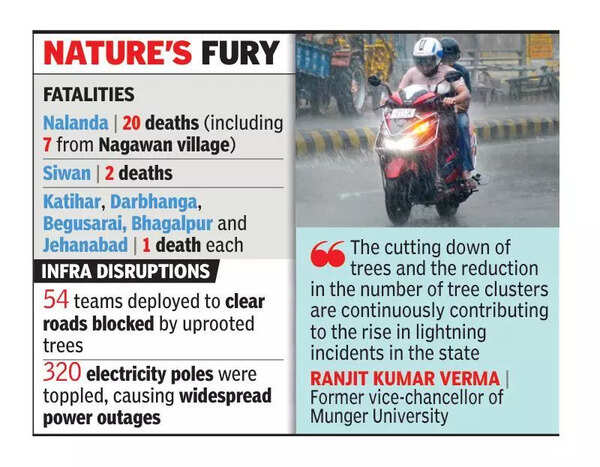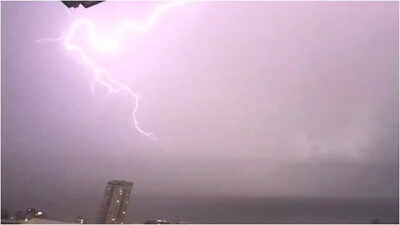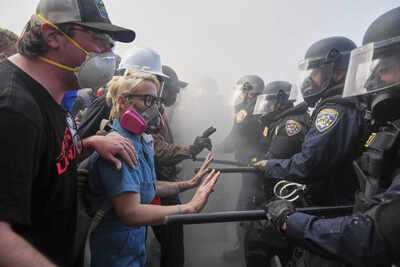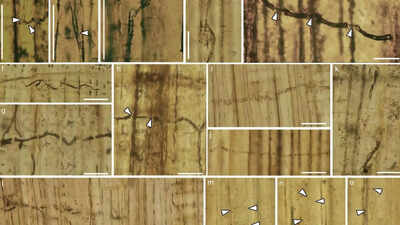
[ad_1]
PATNA: At least 27 people lost their lives across the state on Thursday following a deadly spell of severe weather, marked by intense lightning activity and thunderstorm. Nalanda was the worst affected, accounting for 20 of the total deaths.
The fatalities occurred shortly after the disaster management department issued an alert during the day, warning that “a very severe convective system (like thunderstorms) is moving very fast from west Bihar to east Bihar.” The department advised residents to remain indoors until 6.13pm as a precautionary measure.
A press release from the Chief Minister’s Office confirmed the toll, stating that 20 casualties were reported in Nalanda, two in Siwan and one each in Katihar, Darbhanga, Begusarai, Bhagalpur and Jehanabad.

In Nalanda, seven deaths were reported from Nagawan village alone. Three people were killed when a tree fell on them while four others died after the wall of a temple collapsed as they took shelter during the storm.
According to the Nalanda district administration, 54 teams have been deployed to remove uprooted trees that blocked roads and disrupted traffic. The severe weather also damaged the power infrastructure, toppling 320 electricity poles. Authorities confirmed that 42 teams are working to restore electricity supply across affected areas.
CM Nitish Kumar expressed his deep condolences to the bereaved families and announced an ex gratia payment of Rs 4 lakh to the next of kin of each victim. “I stand with the affected families in this time of disaster,” he said, urging people to remain cautious during inclement weather. He also called on the public to strictly adhere to advisories issued by the disaster management department and to stay indoors during hazardous conditions.
Ranjit Kumar Verma, former vice-chancellor of Munger University and an expert on atmospheric phenomena, linked the rise in lightning-related deaths to environmental degradation. “The cutting down of trees and the reduction in the number of tree clusters are continuously contributing to the rise in lightning incidents,” he said on Thursday.
He recommended the development of dense tree clusters, especially of species such as palm, sal, mango, mahua and peepal, alongside water sources, to help dissipate electrical charge in clouds and reduce the likelihood of lightning strikes.
[ad_2]
Source link










Be the first to leave a comment